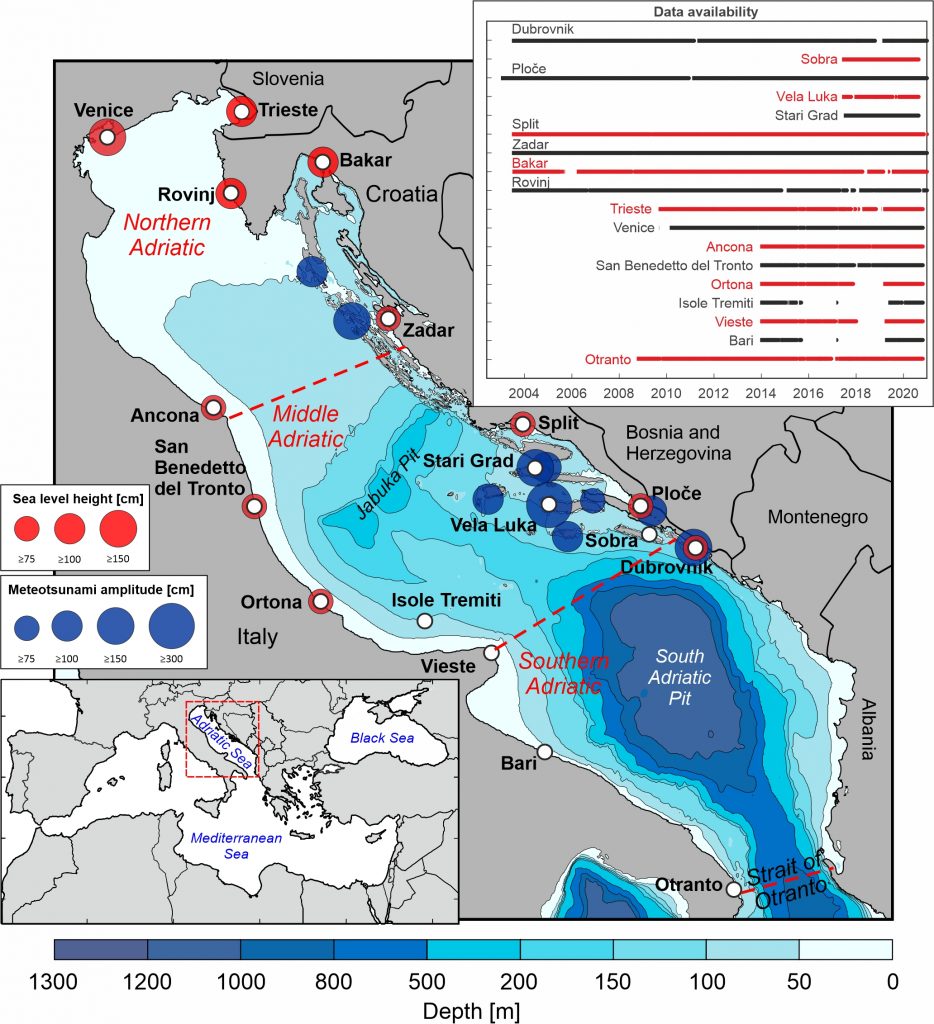
Krešimir Ruić, our PhD student, published a paper on the contribution of high-frequency sea level oscillations to the Adriatic sea level extremes.
Sea level time series of up to 17.5 years length, recorded with a 1 min sampling interval at 18 tide gauges, evenly distributed along the eastern and western coast of the Adriatic Sea (Mediterranean), were analysed in order to quantify contribution of high-frequency sea level oscillations to the positive sea level extremes of the Adriatic Sea. Two types of sea level extremes were defined and identified: (1) residual extremes which are mostly related to storm surges and (2) high-frequency (T < 2 h) extremes, strongest of which are meteotsunamis. The detailed analysis of extremes led to the following conclusions: (1) high-frequency sea level oscillations can dominate positive sea level extremes; (2) even when not dominating them, high-frequency oscillations can considerably contribute to extreme sea levels; (3) contribution of high-frequency oscillations to total signal is governed by a combination of bathymetry and atmospheric forcing, resulting in the strongest high-frequency oscillations over the middle Adriatic; (4) residual extremes mostly happen from October to January when they are also the strongest, while high-frequency extremes spread more evenly throughout the year, with the strongest events peaking during May to September; (5) tide gauge stations can be divided into three distinct groups depending on the characteristics of high-frequency oscillations which they record. Conclusively, both low-frequency and high-frequency sea level components must be considered when assessing hazards related to sea level extremes, implying that availability and analysis of 1 min sea level data are a must.
Ruić, K., Šepić, J., Mlinar, M., Međugorac, I., 2023. Contribution of high-frequency (T < 2 h) sea level oscillations to the Adriatic sea level maxima. Natural Hazards, 116, 3747-3777. Doi: https://doi.org/10.1007/s11069-023-05834-0